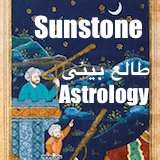In talks with American negotiators, the Iranians spoke of a consortium with several countries that would allow it to keep producing civilian grade fuel, but with more monitoring.
By Farnaz Fassihi
The New York Times
Iran has proposed the creation of a joint nuclear enrichment venture involving regional Arab countries and American investments as an alternative to Washington’s demand that it dismantle its nuclear program, according to four Iranian officials familiar with the plan.
Iran’s foreign minister, Abbas Araghchi, proposed the idea to an American special envoy, Steve Witkoff, when the two men held direct and indirect talks in Oman on Sunday, according to the four Iranian officials. They asked not to be named because they were discussing sensitive issues.
On Tuesday several Iranian media outlets published front-page accounts of Iran’s “new plan on the negotiating table.” One of those outlets was the newspaper Farhikhtegan, which is affiliated with the Revolutionary Guards Corps. It raised the question of whether the proposal was “a service or treason.”
Mr. Witkoff’s office, the State Department and the National Security Council did not respond to requests for comment about the negotiations.
It was not immediately clear how feasible a regional nuclear venture might be if it involved Iran and two of its biggest rivals, Saudi Arabia and the United Arab Emirates.
Iran and the United States have not had diplomatic relations for 45 years, and private American companies may also be reluctant to invest in Iran’s nuclear reactors.
President Trump, on a visit to Saudi Arabia on Tuesday, criticized Iran over its support for proxy militant groups in the Middle East, but he said that a diplomatic resolution with Iran would make the region safer.
“I want to make a deal with Iran,’” Mr. Trump said. “If I can make a deal with Iran, I’ll be very happy, if we’re going to make your region and the world a safer place.”
But Iranian leaders, he warned, need to make a decision soon, or else they will face still more economic pressure from sanctions. “The time is right now for them to choose,” he said. “ Right now, we don’t have a lot of time to wait.”
Iran’s proposal entails the establishment of a three-country nuclear consortium in which Iran would enrich uranium to a low grade, beneath that needed for nuclear weapons, and then ship it to other Arab countries for civilian use, according to the four Iranian officials and news reports.
A deal that would allow Iran to enrich uranium to 3.67 percent would bear similarity to the 2015 nuclear agreement between Iran and world powers. But a major difference would be the on-the-ground presence of representatives from other countries — perhaps even the United States — to provide an extra layer of oversight and involvement.
The four Iranian officials said that unlike the 2015 nuclear deal, which had a 15-year expiration date, the joint venture plan would be permanent. That would allow Mr. Trump, who pulled the United States out of that deal, to argue that he had obtained significantly more from Iran than President Barack Obama did.
Ali Vaez, the Iran director of the International Crisis Group, said that while the venture idea was new and untested, the negotiators needed to try a different approach. “They basically are at a point where they must move beyond the maximum zero sum demands in order for both sides to save face,” he said.
Before Sunday’s talks in Oman, it appeared that Iran and the United States were heading into an impasse, raising the risk of a military confrontation. Iranian and American officials have both said they want to avert war and resolve the standoff diplomatically.
After weeks of contradictory remarks about what exactly Washington was demanding from Tehran, Mr. Witkoff told Breitbart News in an interview that the United States sought to completely dismantle Iran’s nuclear program, meaning no enrichment, and shut down its three key facilities in Natanz, Fordow and Isfahan >>>










Comments